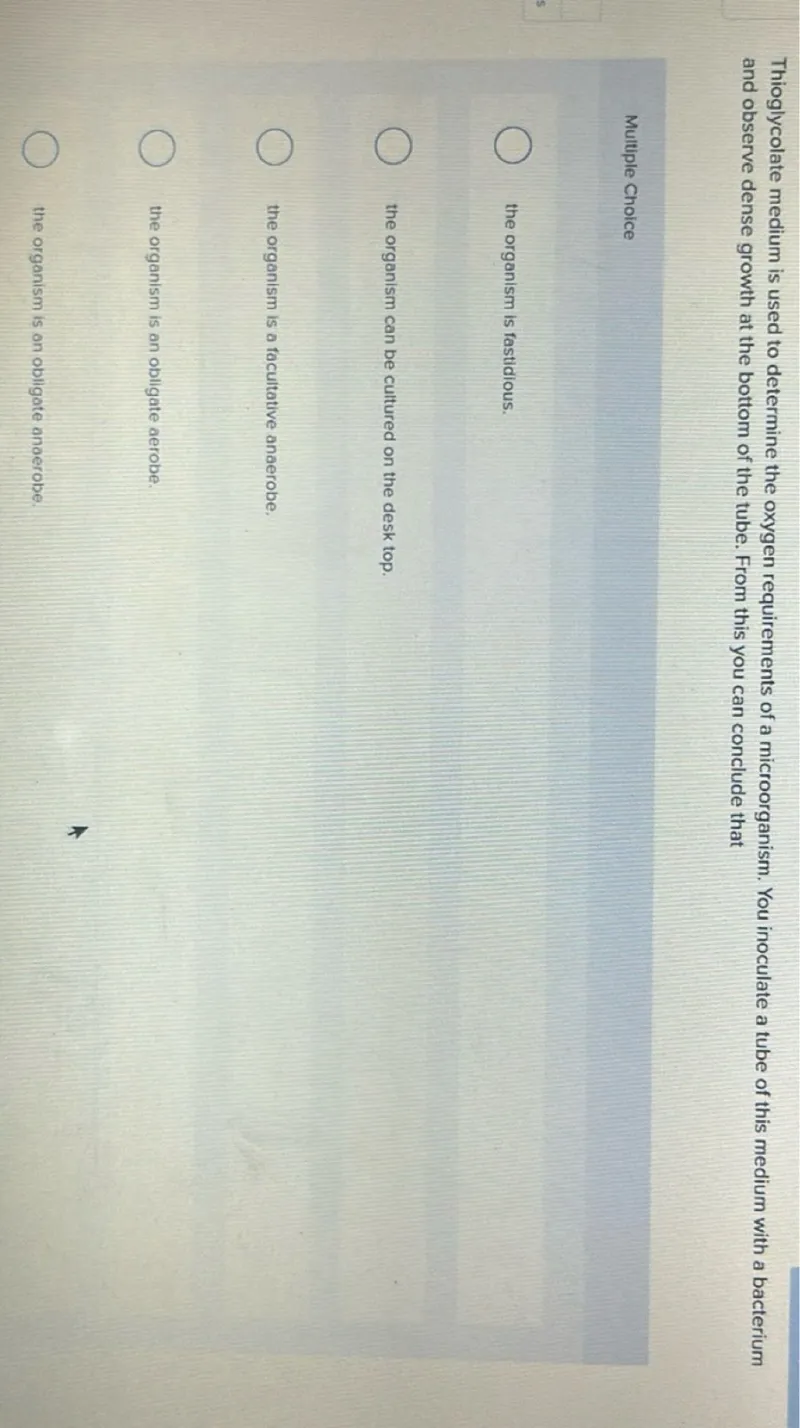Questions: Thioglycolate medium is used to determine the oxygen requirements of a microorganism. You inoculate a tube of this medium with a bacterium and observe dense growth at the bottom of the tube. From this you can conclude that Multiple Choice - the organism is fastidious. - the organism can be cultured on the desk top. - the organism is a facultative anaerobe. - the organism is an obligate aerobe. - the organism is an obligate anaerobe.

Transcript text: Thioglycolate medium is used to determine the oxygen requirements of a microorganism. You inoculate a tube of this medium with a bacterium and observe dense growth at the bottom of the tube. From this you can conclude that
Multiple Choice
the organism is fastidious.
the organism can be cultured on the desk top.
the organism is a facultative anaerobe.
the organism is an obligate aerobe.
the organism is an obligate anaerobe.





